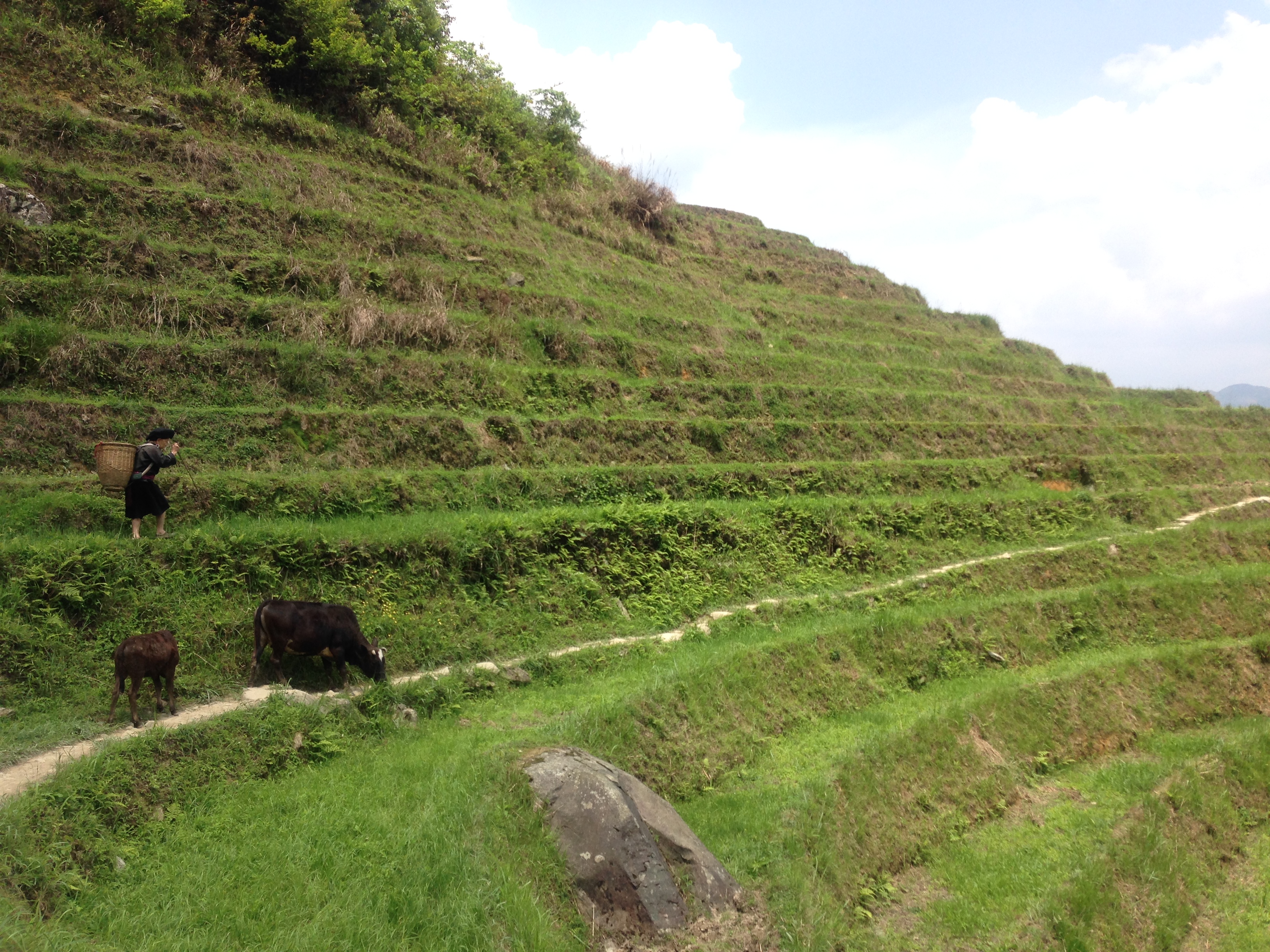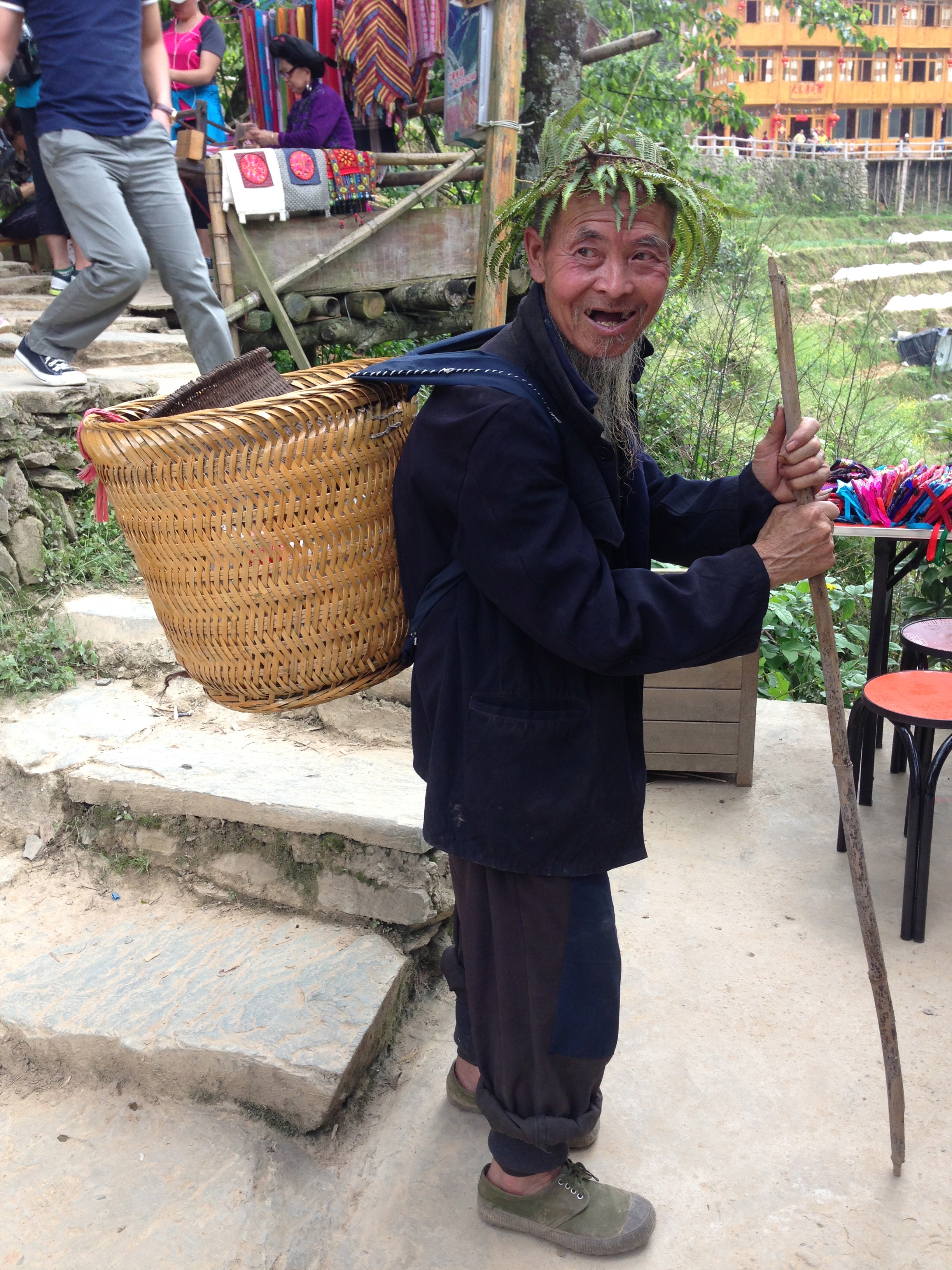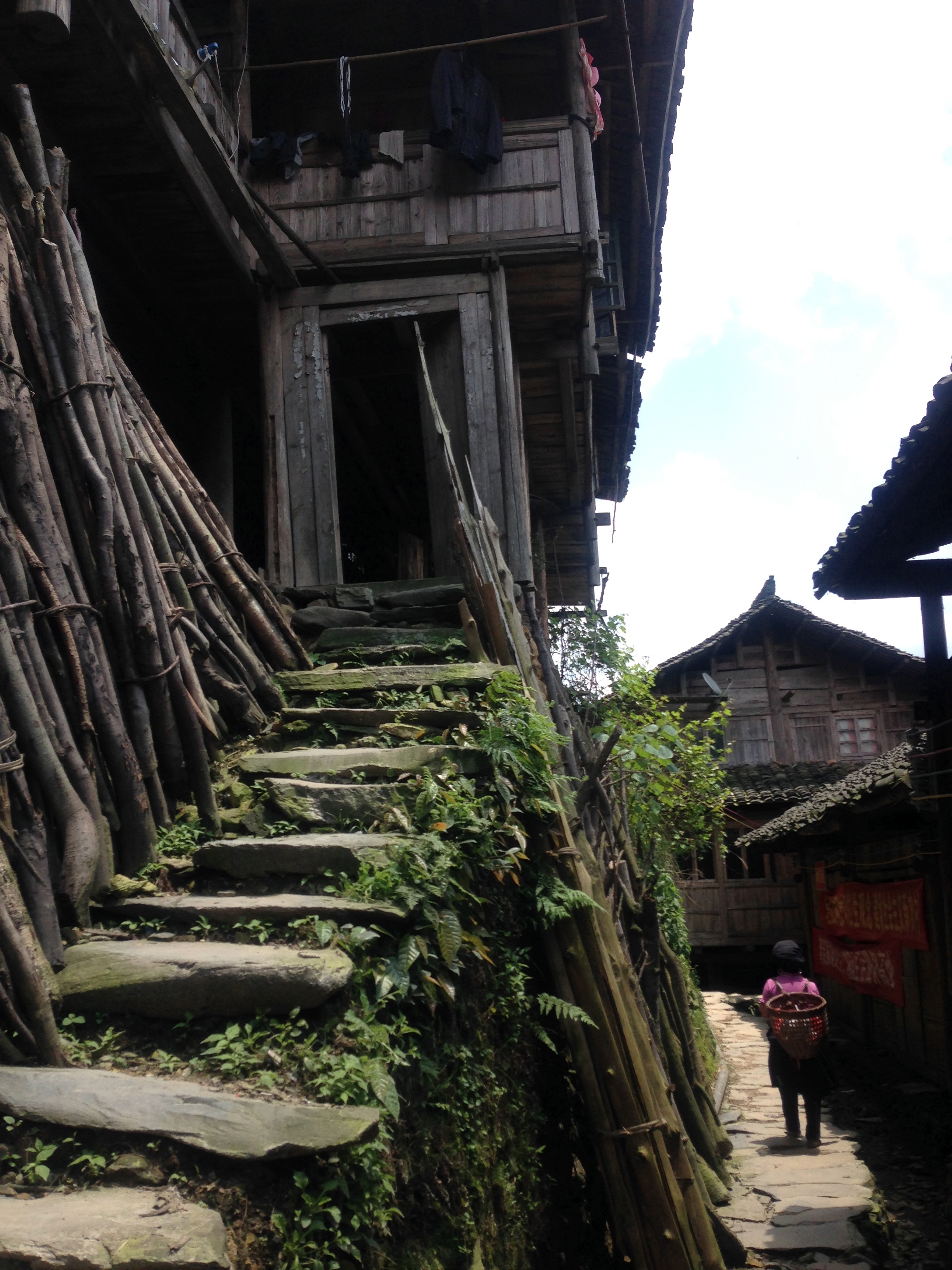A little old lady has kidnapped me and is making me lunch.
She is bent over a pile of bamboo, preparing it for cooking, while I gaze around at the few possessions in her one room wooden home. Two chairs, a fridge, that pile of bamboo and a tattered poster of Stalin.
“You like him?” I ask, pointing to the picture. She nods. “I like.”
“He’s Russian,” I say. She shakes her head. “German,” she corrects me. “Russian,” I insist. She looks confused and shrugs “I don’t know”, and goes back to making me lunch.
Well, I think, news must be a little slow to arrive in this corner of the world. 
My host is a member of the Zhuang ethnic minority, one of the two ethnic minority groups who live in the villages dotted around China’s Longji or “Dragon’s Backbone” in English, rice terraces.
Two of the larger towns, Ping’an and Dazhai, are accessible by road, but the other tiny villages that dot the dragons back are only reachable by foot. I am staying in Ping’an, and have walked two hours through picture perfect rice fields, punctuated by family tombstones, decorated with paper tributes fluttering in the breeze, to reach the tiny hamlet of Zhong Liu.
It is a town that seems to have been cobbled together entirely from wood and stone. Women in traditional dress dart through the crooked paved streets carrying wicker baskets on their backs, and barefoot children dodge chickens as they play. Zhong Liu’s remoteness means there has been little outside influence – save the occasional hungry hiker bringing in valuable tourist dollars but seemingly limited news of the fall of the Soviet Union.
My host spotted me at the start of the decent into the village and seeing an easy target, gave me little choice but to be herded into her home, insisting that it was time to eat.
I wonder around her sparsely furnished house while she cooks. There is a long, black, ponytail lying in a bowl by the wall, and I wonder if someone, her daughter perhaps, has recently married. The women of the Zhuang ethnic minority only ever cut their hair once in their lifetime, when they marry, at around age 18. Otherwise, they wear their long hair done up in a traditional style, a little like a turban. I ask my host, who wears her own, glossy, black hair atop her head in the elaborate “do”, why the women grow their hair so long, and she smiles and says “because it is very beautiful”.
She insists I sit by the window to eat, presenting me with three bowls – stir-fried bamboo, a spinach and egg dish (both are delicious) and a bowl of the best, earthiest, rice I have ever eaten – it was grown locally, in the terraces that surround the village.
She sits next to me during lunch, using the light from the window to work on her embroidery. After lunch, she convinces me to pay her 40rmb ($6.85) to guide me to the next village and I agree, mainly because she’s a bit of a character and I’m a sucker for a hustle, and we set off. The route takes us up a steep, rocky path, before the thick greenery falls away and we are presented with more breathtaking views of the rice terraces winding around the hills before us.
An older woman wearing a dark dress, her long hair also delicately wound upon her head, passes us, herding two cows. She and my now-guide stop to chat. We are really walking through the rice terraces at this point, the path is actually part of the rice terraces, a walkable bank, one of the hundreds cut into the hillside.  Every now and then we pass a tombstone. About half an hour out of Ping’an, there was a small cemetery, with around 30 of them dotting a hillside, and throughout the rest of the day they pop up intermittently, covered in tributes to deceased ancestors – paper money and withering flowers. Ancestor worship, while practiced throughout China, is particularly important to the Zhuang people.
Every now and then we pass a tombstone. About half an hour out of Ping’an, there was a small cemetery, with around 30 of them dotting a hillside, and throughout the rest of the day they pop up intermittently, covered in tributes to deceased ancestors – paper money and withering flowers. Ancestor worship, while practiced throughout China, is particularly important to the Zhuang people.  We stop to rest in a small gazebo where a local farmer is also taking a break. Another woman, also in traditional dress, stops by and has a conversation with my guide in the local dialect. I can’t understand a word except that the tone and timber tells me there is some serious local gossip being exchanged.
We stop to rest in a small gazebo where a local farmer is also taking a break. Another woman, also in traditional dress, stops by and has a conversation with my guide in the local dialect. I can’t understand a word except that the tone and timber tells me there is some serious local gossip being exchanged.
We soon reach the next town, (after taking a left in the fork in the road that my guide was quick to point out to prove she had earned her fee) and waved goodbye. It was another half hour to Tiantou, a slightly larger town with more tourists. There were plenty of guesthouses with signs promising coffee and beer, and outside one, two cages with long, green snakes curled up inside. 
 The road to Dazhai is packed with other hikers walking in the other direction to spend the night in Tiantou and takes about half an hour. I pass red-faced Western backpackers struggling under the weight of their bags, and Chinese couples with enormous cameras, the girls, carrying their high heels in one hand, pose sweetly while their boyfriends snap away. Dazhai is a larger town, with cute cobblestone streets, but with less charm than its counterpart Ping’an. I stop for a beer at a local restaurant before ambling down to the carpark, just outside the town gates, hoping to hitch a ride back to Ping’an. It’s packed with tour buses and taxis, tourists and souvenir sellers. I haggle for a ride and am soon nestled in the back seat as the car winds along the mountain roads. It’s only a few hours walking from Zhong Liu, but already I feel half a world away.
The road to Dazhai is packed with other hikers walking in the other direction to spend the night in Tiantou and takes about half an hour. I pass red-faced Western backpackers struggling under the weight of their bags, and Chinese couples with enormous cameras, the girls, carrying their high heels in one hand, pose sweetly while their boyfriends snap away. Dazhai is a larger town, with cute cobblestone streets, but with less charm than its counterpart Ping’an. I stop for a beer at a local restaurant before ambling down to the carpark, just outside the town gates, hoping to hitch a ride back to Ping’an. It’s packed with tour buses and taxis, tourists and souvenir sellers. I haggle for a ride and am soon nestled in the back seat as the car winds along the mountain roads. It’s only a few hours walking from Zhong Liu, but already I feel half a world away. 






Lovely story, Belle and good pics too